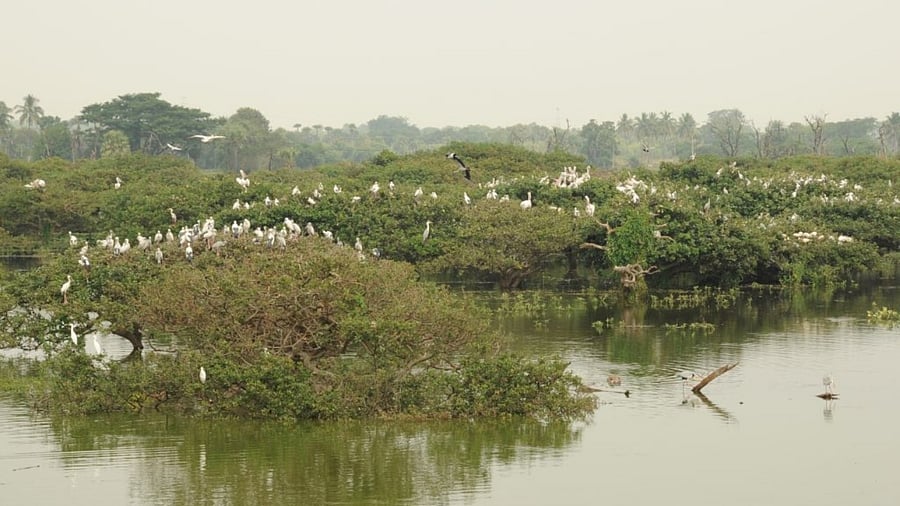
Migratory birds from across the globe will continue to enjoy the pristine habitat that they were used to in the past at Vedanthangal, India’s oldest bird sanctuary, their favourite nesting and roosting place, thanks to a recent decision by the Tamil Nadu Government.
The state government decided to overturn a controversial proposal of the then AIADMK dispensation in 2020 to reduce the outer boundary line around the Vedanthangal bird sanctuary by two kilometres, which could have posed a “serious threat” to the region’s ecology.
The proposal could have changed the land use of about 5,000 hectares, resulting in the destruction of the region’s ecology as the decision could have led to mushrooming of industries, commercial buildings, and residential apartments near the sanctuary.
The withdrawal of the order means the five-kilometre buffer zone around the sanctuary, which is visited by nearly 30,000 birds of different species every year, will remain intact. Chief Wildlife Warden Shekhar Kumar Niraj communicated the decision to Environment and Forest Secretary Supriya Sahu in a letter last week – both officers are nature-friendly.
The decision also comes in the wake of the new DMK government attaching top priority to ecology-related issues and embarking on a mission to save water bodies of the state, though at the behest of the Madras High Court.
Vedanthangal bird sanctuary, located around 90 kilometres from Chennai, is one of the favourite spots for birders across the world, who come here for various kinds of research. Environmentalists and bird watchers in Tamil Nadu welcomed the government’s decision saying it will not just help the migratory birds enjoy their natural habitat but also save water bodies in and around the village in Chengalpattu district.
Vedanthangal, one of the oldest bird sanctuaries in the country that was declared in 1936 and notified in 1963, is a paradise for migratory birds. “During the season, you can see nearly 30,000 birds of various species at the sanctuary. Many birds come here for roosting, while others come for nesting,” a birder, requesting anonymity, told DH.
The villages around Vedanthangal also took steps to ensure that the birds have a safe nest in the sanctuary by keeping fertilizers away from their agricultural lands and shunning firecrackers even during the Deepavali season.
Environmentalist G Sundarrajan of Poovulagin Nanbargal told DH that rationalising the boundaries of the sanctuary could have had cascading effects on the sanctuary.
“Five kilometres around the sanctuary is declared as a notified zone. The first kilometre is the core zone, the second and third kilometres form the buffer zone, while the remaining fourth and fifth kilometres constitute the eco-sensitive zone. Changes in the boundary could have had a serious effect on the core area of the sanctuary. With this order, the threat to ecology is gone. However, we should continue to protect such sanctuaries in our interests,” Sundarrajan said.
